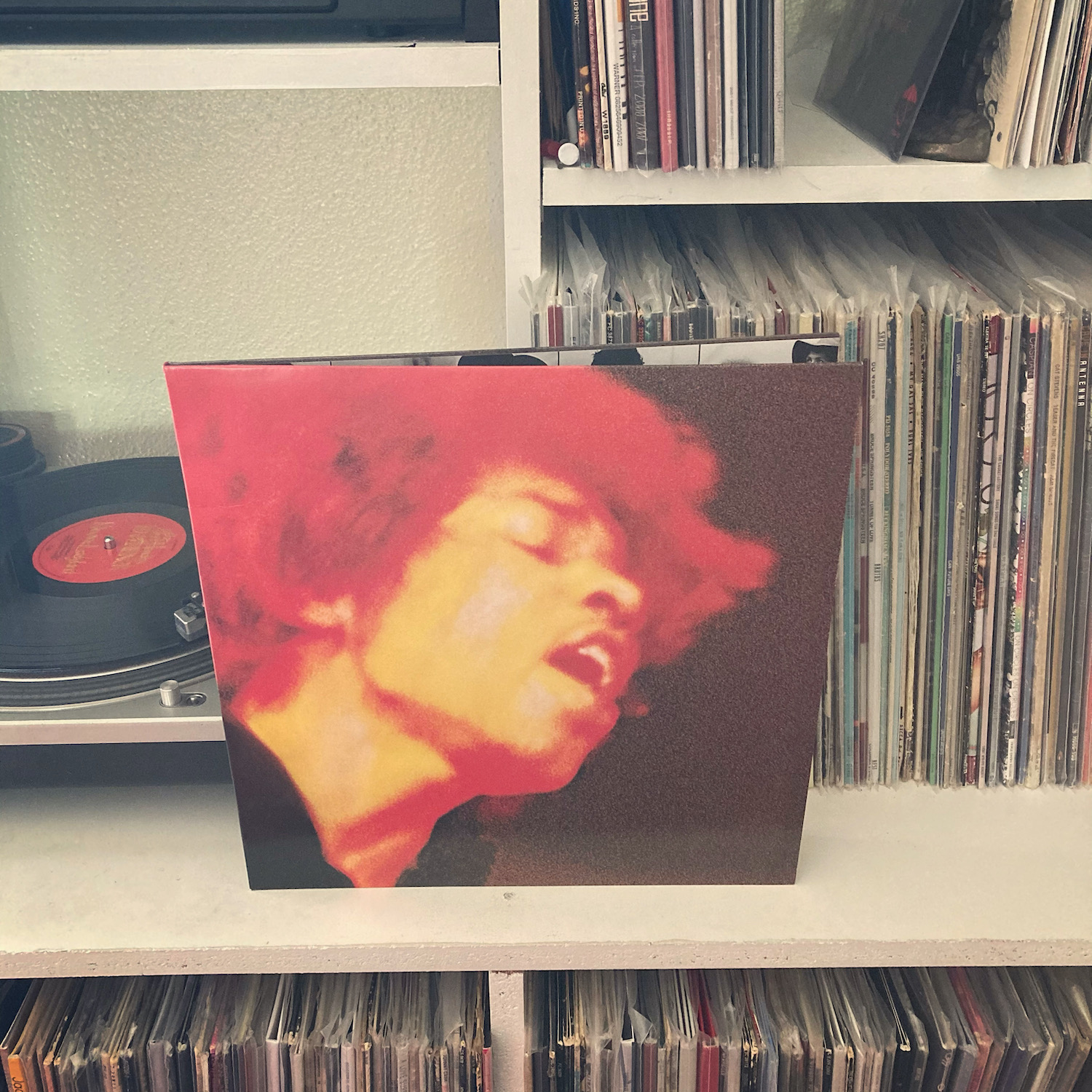 Whenever a new technology makes its way into music—such as autotune, synthesizers, samplers, or drum machines—it’s often accompanied by a chorus of naysayers saying things like, “you’d never see a REAL musician like Jimi Hendrix using that crap.”
Whenever a new technology makes its way into music—such as autotune, synthesizers, samplers, or drum machines—it’s often accompanied by a chorus of naysayers saying things like, “you’d never see a REAL musician like Jimi Hendrix using that crap.”
They’re really betraying their own ignorance there, as Hendrix had absolutely no qualms about utilizing whatever new technology he could get his hands on. This is most demonstrated on the last album he made before his death, the massive double album Electric Ladyland. While the Experience had plenty of psychedelic elements on their two previous albums, Electric Ladlyand dives headlong into studio weirdness and compositional surrealness, offering an album that is as rewarding as it is imposing.
More than fifty years after his death, Jimi Hendrix is still lifted up as one of the best guitarists of all time. And as much as he had the traditional chops to deem that praise, most of his influence has as much to do with the way he used effects like distortion and feedback to manipulate the sound of the instrument as it does his actual playing. Just listen to his famous version of the Star Spangled Banner where he spends more time wrangling squeals and squawks out of his amplifier than playing real notes.
Electric Ladyland has a similar fascination with noise, and specifically how studio manipulation can facilitate it. The opening track “…And the Gods Made Love” is completely amorphous, created only with tape loops of varying speeds. It’s a brief trip through avant garde noise, but its spirit lives in many of the proper songs. “Burning of the Midnight Lamp” features a number of studio effects, such as speed manipulation, phasers, and liberal usage of multitracking. “1983 (A Merman I Should Turn to Be” is a thirteen-minute avant-garde track that features reversed guitar, various woodwinds, and gratuitous tape manipulation, leading into one-minute noise collage “Moon, Turn the Tides…Gently Gently Away.”
Even when it’s not being full-on weird, the outfit is still more adventurous than they had ever been. “Voodoo Chile” (the less well-known of the two songs with a similar title on this disc) is a relatively traditional blues jam, except for the fact that its fifteen minutes long. It plods menacingly along the verses, erupting with molten guitar and organ in the verses. With a little more fuzz on the guitar, it could almost pass for doom metal. “Crosstown Traffic” is a pretty straightforward rock track, barring the swinging pan of background vocals in the chorus.
But all of those tracks are practically deep cuts compared to the last two tracks: “Voodoo Child (Slight Return)” and Bob Dylan’s “All Along the Watchtower,” which is in the top five best cover songs of all time (I would confidently call it THE best if it weren’t for Johnny Cash’s “Hurt”). Both tracks were instrumental to my early days as a guitar player, along with “Purple Haze.” “Watchtower” remains one of Hendrix’s most ubiquitous tracks, but while it is absolutely a wonderful track, it practically sounds old fashioned in the context of such an odd album.
Don’t mistake me—that’s not a dig at that track at all, but more a testament to how Hendrix, Redding, and Mitchell were able to coax a listenable album out of such weirdness. While Are You Experienced? may be more accessible and have more hit singles on it, Electric Ladyland practically dwarfs it. It is an absolutely monolithic album, as adventurous and singular. It’s a rare thing that double albums move quickly, but this album’s seventy-three-minute run time practically breezes by without a dull moment. A truly legendary album from an artist whose time came too soon.